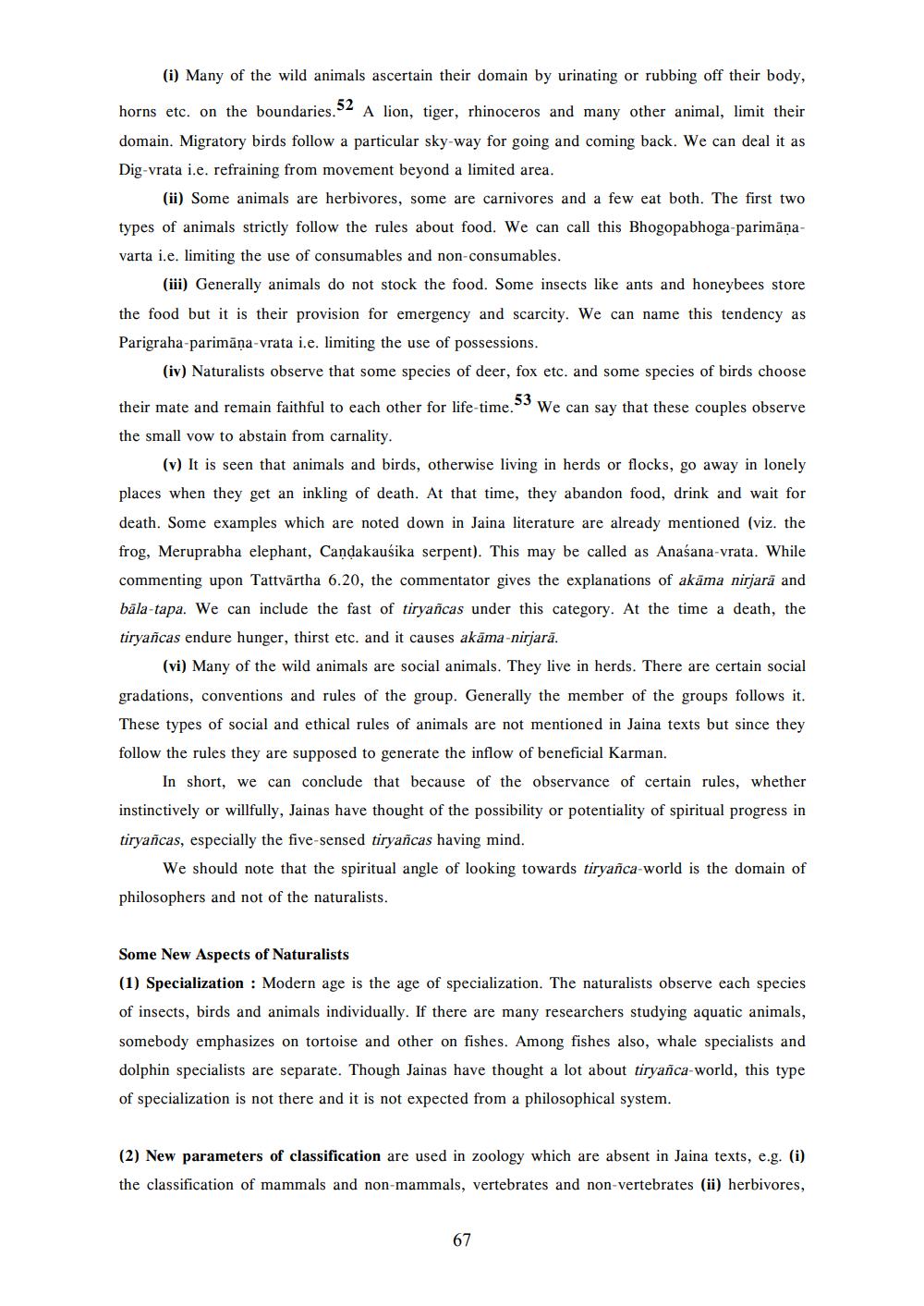________________
(i) Many of the wild animals ascertain their domain by urinating or rubbing off their body,
horns etc. on the boundaries. A lion, tiger, rhinoceros and many other animal, limit their domain. Migratory birds follow a particular sky-way for going and coming back. We can deal it as Dig-vrata i.e. refraining from movement beyond a limited area.
(ii) Some animals are herbivores, some are carnivores and a few eat both. The first two types of animals strictly follow the rules about food. We can call this Bhogopabhoga-parimāņavarta i.e. limiting the use of consumables and non-consumables.
(iii) Generally animals do not stock the food. Some insects like ants and honeybees store the food but it is their provision for emergency and scarcity. We can name this tendency as Parigraha-parimāna-vrata i.e. limiting the use of possessions.
(iv) Naturalists observe that some species of deer, fox etc. and some species of birds choose
their mate and remain faithful to each other for life-time. We can say that these couples observe the small vow to abstain from carnality,
(v) It is seen that animals and birds, otherwise living in herds or flocks, go away in lonely places when they get an inkling of death. At that time, they abandon food, drink and wait for death. Some examples which are noted down in Jaina literature are already mentioned (viz. the frog, Meruprabha elephant, Candakauśika serpent). This may be called as Anasana-vrata. While commenting upon Tattvārtha 6.20, the commentator gives the explanations of akāma nirjarā and bāla-tapa. We can include the fast of tiryancas under this category. At the time a death, the tiryancas endure hunger, thirst etc. and it causes akāma-nirjarā.
(vi) Many of the wild animals are social animals. They live in herds. There are certain social gradations, conventions and rules of the group. Generally the member of the groups follows it. These types of social and ethical rules of animals are not mentioned in Jaina texts but since they follow the rules they are supposed to generate the inflow of beneficial Karman.
In short, we can conclude that because of the observance of certain rules, whether instinctively or willfully, Jainas have thought of the possibility or potentiality of spiritual progress in tiryañcas, especially the five-sensed tiryañcas having mind.
We should note that the spiritual angle of looking towards tiryañca-world is the domain of philosophers and not of the naturalists.
Some New Aspects of Naturalists (1) Specialization : Modern age is the age of specialization. The naturalists observe each species of insects, birds and animals individually. If there are many researchers studying aquatic animals, somebody emphasizes on tortoise and other on fishes. Among fishes also, whale specialists and dolphin specialists are separate. Though Jainas have thought a lot about tiryanca-world, this type of specialization is not there and it is not expected from a philosophical system.
(2) New parameters of classification are used in zoology which are absent in Jaina texts, e.g. (i) the classification of mammals and non-mammals, vertebrates and non-vertebrates (ii) herbivores,




